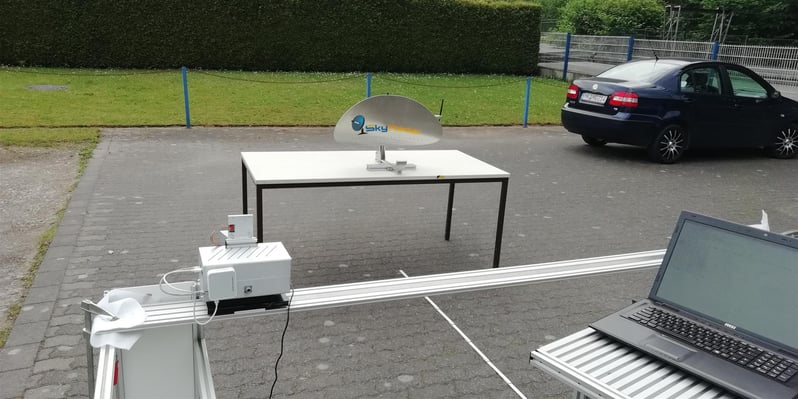Frequently asked questions
A collection of articles and resources
A collection of articles and resources
SkyRadar's FMCW and SAR Product work together. They help to demonstrate underlying theory and principles of FMCW and SAR and introduce into a targeted application of the radar concepts in practice.
The FMCW radar (Frequency Modulated Continuous Wave Radar) is a Continuous Wave radar where the transmission signal is modulated in frequency. The FMCW based module operates with high resolution radar transceiver, 3 receiving channels and a phase-locked loop transmitter.
The wave-form is generated through a Voltage Controlled Oscillator. Several frequency modulated continuous wave forms are made possible (including triangle, saw-tooth, square and FSK).
The FreeScopes software allows for comfortable control of the system.
The software also provides calculation and visualization for the Synthetic Aperture Radar extension.
In fact, the basis of every Synthetic Aperture Radar (SAR) is an FMCW radar. An FMCW radar is moved horizontally along the target. It shoots radar images in same-sized increments. Then it aggregates the results into a high resolution image. The minimum step-size (increments) is < 1mm due to a high precision step motor. So maximum displacement (stop position) is around 2.00 m. Logically the maximum displacement is also the maximum step size.
The vertical distance resolution of the system is appox. 83 cm.

The SAR signal is produced as follows:
The SAR system includes a means of sophisticated clutter elimination:
Step 1: the location is scanned without the target
Step 2: the location is filmed with the target
Step 3: the image of the location without the target is deducted from the image including the target. The same principle is used with operational radars, where electronic maps with the pre-scanned clutter (e.g. buildings) are deducted from the image with target.
The final image of the above shown experiment will look similar to this one:

SAR can make use of all features available in the FMCW screen. So the typical image optimization can be done, such as
Read more in the page: Exercises for FMCW.
The SAR module is dedicated to show the mathematically basics for a synthetic aperture in practice. It uses a primary antenna with a real aperture and relatively poor horizontal directivity. After the processing the SAR shows the surroundings with noticeable improvement in the resolution capability. The higher number of measurements (i.e. the pulse repetition rate) and a broader antenna pattern improve the resolution of the radar image.
In addition, clutter elimination through deduction of the empty location image is part of the SAR sequence.
Many additional SAR specific exercises can be added.
E.g.,
Radars with IoT Architecture and State-of-the-Art Technology installed at Customer Sites
SkyRadar develops innovative radar training solutions and simulation systems, empowering education, research & professional training in aviation and defense sectors.
All rights reserved by SkyRadar 2008 - 2025
